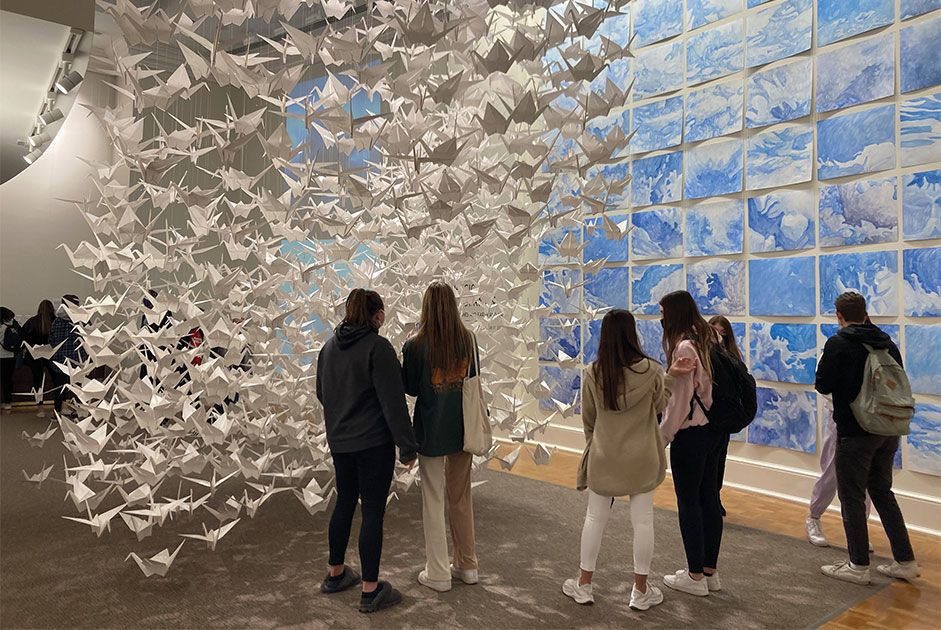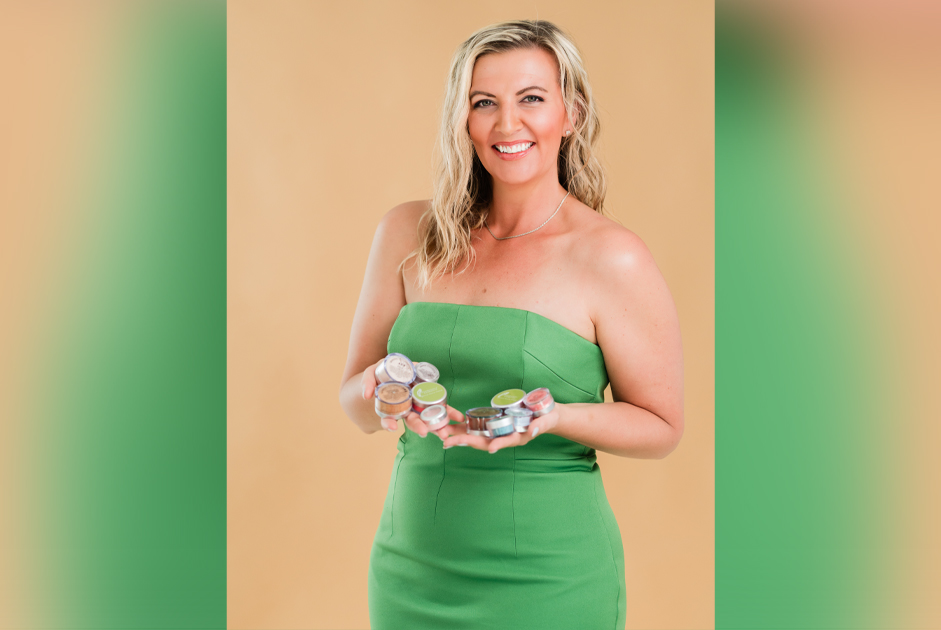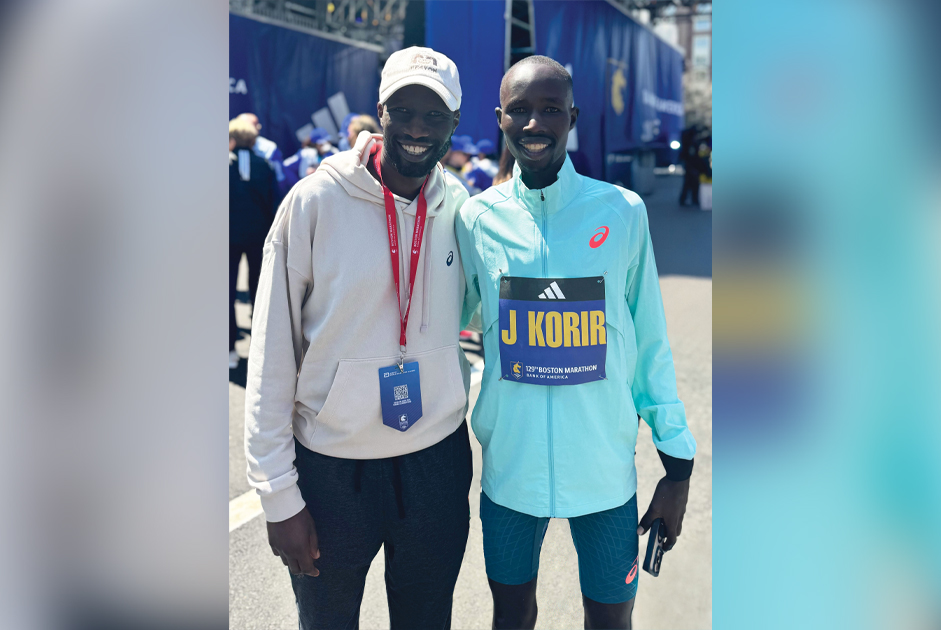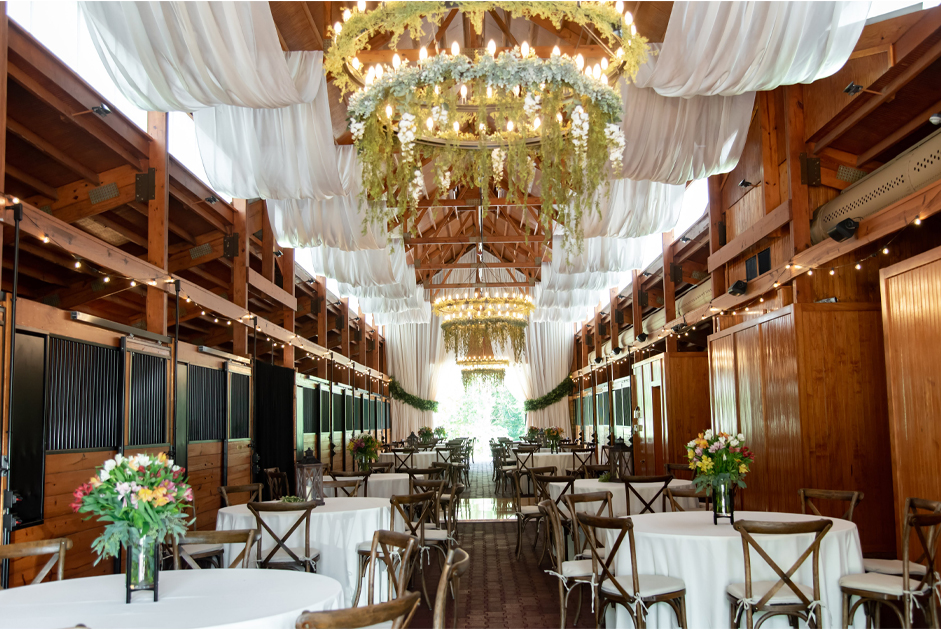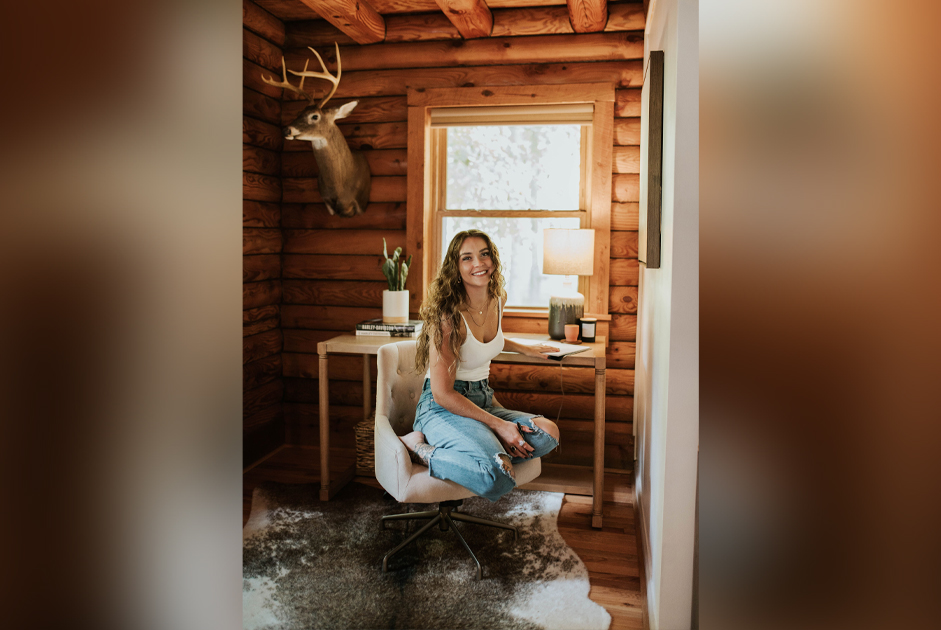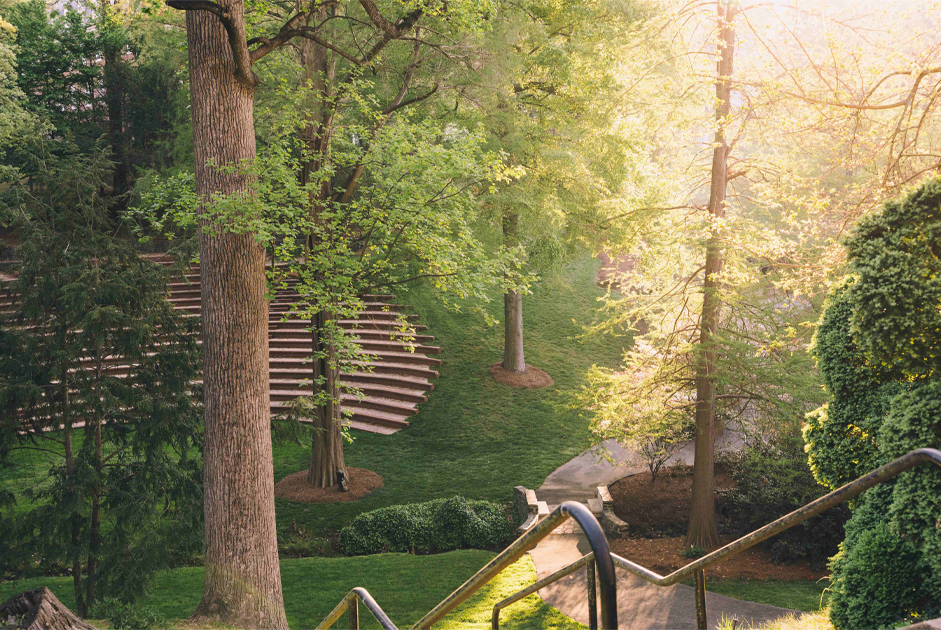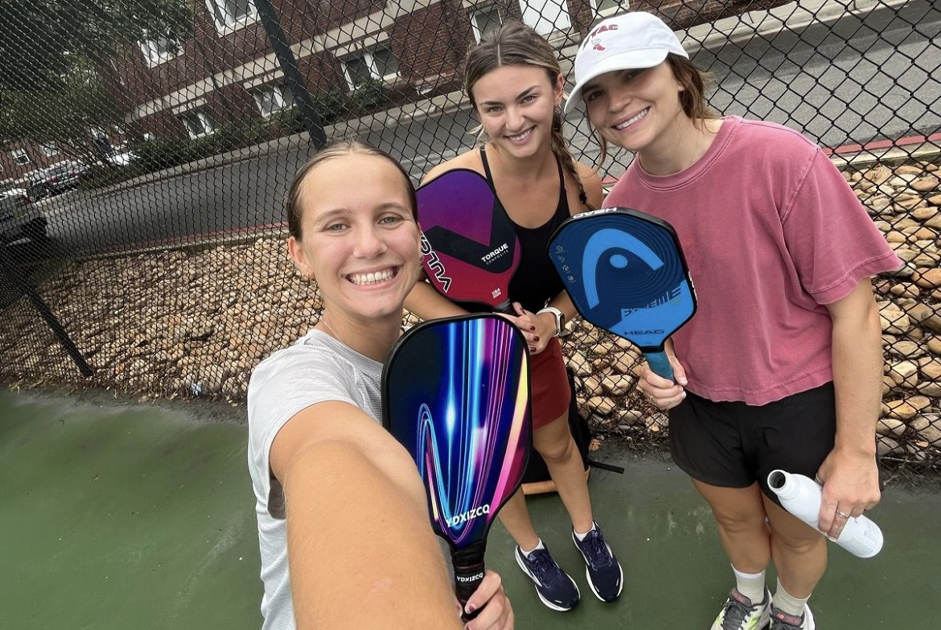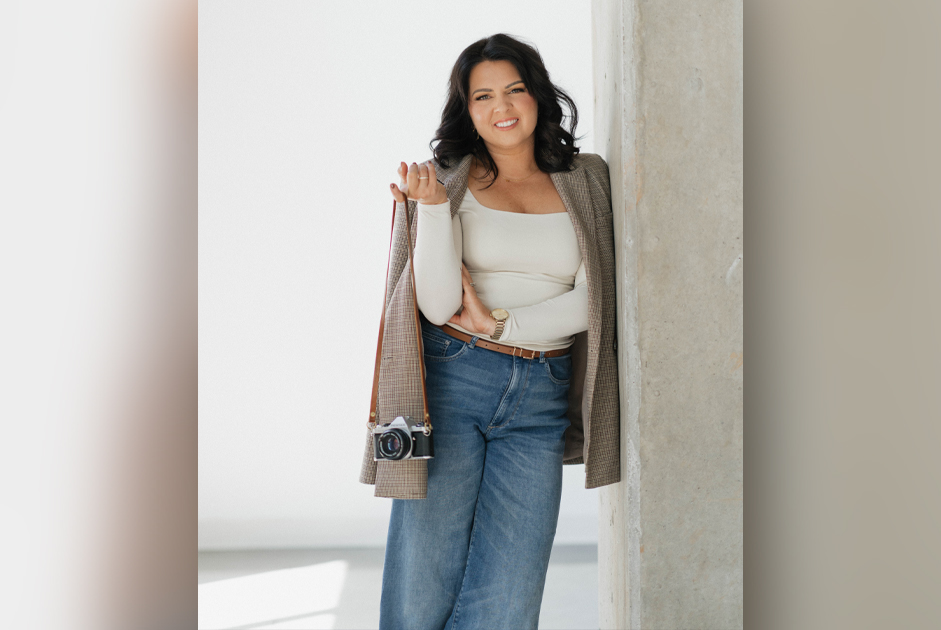A monthly column that keeps its finger on the pulse of Forsyth’s artists and their inspiring stories
This month’s featured artist, Jessica Singerman, has a gift for creating work that both captivates and awakens the senses of her viewers. Borrowing elements and inspiration from mother nature, Jessica’s work incorporates a unique combination of colors, shape, textures, and size.

Jessica Singerman | Abstract Landscape Artist
How would you describe your work?
I make paintings and giant installations, which are sort of like sculptures through which people can move around. I am inspired by the poetry of nature: color and light in the landscape, seasons, and the passing of time. In my work I play with color, shape and line to discover what kind of unusual or surprising effects I can create that are evocative of outdoor spaces.
I believe that in an increasingly digital world, it is vital to go outside. My hope is that my artwork will give people the opportunity to dream and to experience joy, and ultimately to inspire them to return to the outdoors and build meaningful connections with others there.
What influences your art most?
Spending time in nature, specifically riding bikes, running and walking all influence my work. All of our senses are awakened when we spend time outside. The rhythm of steps while hiking, the whir and clicks on a bike ride, the changing shapes of light and shadow between trees, the sound of birdsong—the memory of all these impacts on my senses feeds into my process.
How have you evolved, personally, as an artist?
The biggest change for me was after becoming a parent over nine years ago. Becoming a mom gave me focus and helped me prioritize my work. There’s a lot of talk about how parenthood can be challenging for artists, but I think becoming a parent made me a better, more dedicated artist. A couple of months after my son was born, I felt like I would lose my sense of self. It was starting a daily art practice and making something from start to finish that gave me the momentum to keep going. Now with years of consistent art practice under my belt, I understand how important it is to keep making work – something, anything! – even when you don’t feel like it, because that’s how you get to the good stuff.
What do you enjoy most about selling at community pop ups and art shows?
I love meeting and talking with collectors. I spend a lot of time by myself working in the studio, so it’s nice to talk about art with people and to hear their plans for artwork in their homes and workspaces. I think going out into the world is an important part of an artwork’s “life cycle.” These events are also a chance to reconnect with other artist friends, and that’s always fun!

How do you carve out time to be creative?
I have to prioritize it. Since I run my own business selling my work and mentoring other artists (and I also teach at UNCSA), there are always things to do, and all of those tasks can easily take over my studio time if I’m not careful. Mornings are the best time for me to work in the studio because I’m not yet thinking about everything else that has to happen during the day. The more judgmental part of my brain tends to be quieter in the morning, and this helps, too. I need a calm, clear head space to work effectively – especially when I’m working abstractly.
What are you working on that excites you right now?
I’ve been working on a painting commission that’s been particularly satisfying to make. It was commissioned by a filmmaker as a wedding anniversary/holiday gift for his partner who is a neurologist. The client asked me to combine stills from one of his films with illustrations of brain cells by the 19th century artist/scientist Santiago Ramon y Cajal, one of his wife’s favorite artists. He trusted me to come up with something using all of those images as references and was open to the finished painting being abstract, rather than looking like any of the photos he sent me.
To make the painting, I ended up layering image after image to find new overlapping shapes. Then through a process of finding and combining shapes and playing with color, the painting emerged. It was a fantastic project to work on.
What is one piece of advice you’d like to share with fellow artists?
Big projects are made up of many small steps. One year, I made a small watercolor painting every day for 30 minutes. At the end of that year, I was able to make a whole book of watercolors. I also made a 19-foot tall mountain of paper cranes by folding birds for an hour every day for three straight months.
If you are interested in learning more about Jessica Singerman, you can follow her on Instagram and Facebook @jessicasingermanfineart as well as find her work online at www.jessicasingerman.com. You can also check out her work at Charlotte Russell Contemporary in Raleigh until February 16th.
